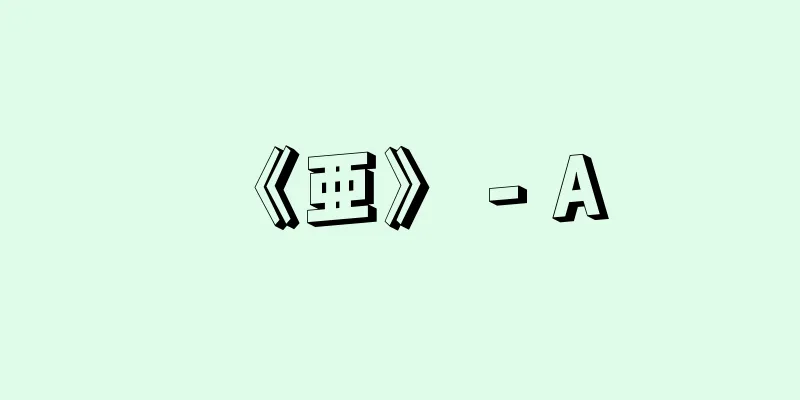prakṛti (English spelling)

|
…Without any action, its action is only the observation (darśana) of the material principle, which is also called prakṛti or pradhāna (self-nature), the only real, eternal, active, non-mental mass. The material principle is composed of three constituents, triguṇa (the three virtues). *Some of the terminology explanations that mention "prakṛti" are listed below. Source | Heibonsha World Encyclopedia 2nd Edition | Information |
|
…活動することなく,その作用はただ物質的原理を観察(ダルシャナdarśana)するのみである。また物質的原理はプラクリティprakṛtiまたはプラダーナpradhāna(〈自性〉)と呼ばれ,唯一の実体であって,永遠で活動性をもち,非精神的な質量因である。物質的原理は三つの構成要素トリグナtriguṇa(〈三徳〉)から成る。… ※「prakṛti」について言及している用語解説の一部を掲載しています。 出典|株式会社平凡社世界大百科事典 第2版について | 情報 |
<<: Prajapati (English spelling)
>>: prakaraṇa (English spelling) prakarana
Recommend
Family crest - Ienomon
The family crest that is attached to clothing, fur...
SLIP - Serial Line Internet Protocol
Serial Line Internet Protocol. An Internet connect...
Carranza Doctrine
...Carranza, who assumed the presidency in accord...
Commenda (English spelling)
A form of investment relationship adopted by joint...
Cloudy - Cloudy
〘Transitive 4〙 ("uchi" is a prefix) ① Th...
Garshin (English spelling) Vsevolod Mihaylovich Garshin
Russian novelist. Born on February 14th in Ekater...
Shintan
Another name for China. It is of the same family a...
Amazon Horned Frog - Amazon Horned Frog
...About 10 species are distributed in South Amer...
Oyashio Koriku
...Therefore, it is possible that the continent t...
Beganna (English spelling) [Amhara]
A type of traditional Ethiopian stringed instrumen...
Cumbria - Cumbria (English spelling)
A county in the northwest of England, England. It...
Fast horse - Hayauma
〘noun〙① A horse ridden by a Hayauchi messenger. A ...
TERCOM
However, with the advancement of technology, the ...
secretary
...In Latin, the word scriba, which comes from th...
Tree of Jesse - Essai no Ki
…From Noah, the father, grow two trunks, Shem and...









